Search Results for Tag: Ang Tshering Sherpa
Ang Tshering Sherpa: “Low cost operators spoil the industry”
The numbers fill Ang Tshering Sherpa with confidence. “We hope that mountaineering in Nepal will revive very soon,” says the President of the Nepal Mountaineering Association (NMA) when we meet at the International Mountain Summit in Bressanone in South Tyrol. According to his words, expeditions to Nepalese mountains higher than 6,500 meters, which are managed by the government, have already achieved 87 percent compared with the time before the devastating earthquake in April 2015. Climbing on mountains lower than 6,500 meters, managed by the NMA, has even fully recovered. Trekking is between 40 and 50 percent again, depending on the region, the head of the NMA says: “We need to let the world know that the best way to help Nepal is by visiting. Each and every person who spends time in Nepal will help to revive the economy and rebuild the infrastructure.”
![]() read more
read more
First Everest summit successes from Nepali side since 2013
The workers were the first. Today nine Sherpas reached the summit of Mount Everest, as first climbers this spring, said Ang Tshering Sherpa, President of the Nepal Mountaineering Association (NMA). The Sherpas belonged to a team including members of several expedition operators, which fixed ropes up to the highest point at 8,850 meters. It was the first summit success on the Nepalese side of Everest since 2013.
![]() read more
read more
If the water towers are empty
It is no more than a coincidence, but a suitable one. This year the “International Mountain Day”, which, since 2002, is observed every year on 11 December, coincides exactly with the final day of the UN Climate Change Conference in Paris – that will end tomorrow hopefully with an agreement on climate protection which is more than just hot air. Mountains are considered as early warning systems for climate change (see the video below). Everyone who is often in the mountains would have to be blind not to perceive the changes. Glaciers are melting almost everywhere at record speed. For instance, more than two dozen mountains in Asia, Africa and South America, which are located near the equator and were once glaciated, will probably be completely ice-free within the next two to three decades. Permafrost in the mountains is in retreat too: soils that were permanently frozen before are thawing. Increased rockfall, more frequent landslides or mudslides are the result – not only in the Himalayas.
![]() read more
read more
Rescue runs on Mount Everest
My heart is heavy. My thoughts are with the people in Nepal – and also with the climbers on Mount Everest. After the devastating earthquake on Saturday, the death toll is rising continuously. Meanwhile, it’s more than 2,000 across the country. And also from the base camp on the Nepalese side of Everest more and more victims are reported. As reported before, yesterday’s earthquake had triggered a huge avalanche from the seven-thousander Pumori vis-a-vis Everest that had hit the Base Camp at 5,300 meters. Today, the area was shaken by strong aftershocks of magnitude 6.7 on the Richter scale.
![]() read more
read more
Everest shitstorm
“The Lord of the smells“ – this was the title of a story I wrote more than 20 years ago for a German magazine dedicated to parents. At that time my wife and I were swaddling three children several times daily. Once the garbage men threatened to ignore our trash can packed with diapers, not only because it stank, but also because it was so heavy. One day, under the impression of having disposed again several portions of human waste, I wrote said article about the suffering of a swaddling father. It was never published. “Funny, but a little bit to stinky”, the chief editor of the magazine replied. Meanwhile, the public seems to be not as squeamish as in former times: A statement of Ang Tshering Sherpa, president of the Nepal Mountaineering Association, about the problem of human waste in the high camps on Mount Everest led to a true “shitstorm” on the Internet.
![]() read more
read more
Many question marks before spring season on Everest
The same procedure on Everest as every year? Probably not, but a reliable forecast is difficult. “There seem to be less people on expeditions and also less people trekking in Nepal”, the New Zealander Russell Brice replies to my question which influence the avalanche disaster on Good Friday 2014 and the subsequent end of all great expeditions on Everest south side will have on this year’s spring season on the highest mountain in the world. “It seems that more people want to go to North side, and less people to South side”, says the head of the expedition operator Himalayan Experience. However, Brice withdrew his tendered Everest expedition in Tibet and decided to just operate on the south side this year.
![]() read more
read more
Help for families of avalanche victims on Everest
Waiting for the calm after the storm. Currently the wind is blowing strongly in the summit region of Mount Everest – with speeds up to 60 knots (about 110 km per hour). A summit attempt of one of the about ten teams on the Tibetan north side of the mountain is out of question. Not until 16 May a good weather window with low wind is expected. On the south side of Everest, according to the U.S. expedition leader Eric Simonsen, the “Icefall doctors” brought down their ladders and ropes from the Khumbu Icefall. Until next season, the material is deposited in a storage in Gorak Shep, the last permanently inhabited small village near Mount Everest at 5200 meters. Thus there will be definitely no climb to the 8850-meter-high summit from the Nepalese side this spring. This week in Kathmandu, the Japanese climber Ken Noguchi presented on behalf of his environmental protection organization “Seven Summits Actions for Sustainable Society” a donation of $ 100,000 to Ang Tshering Sherpa, president of the Nepal Mountaineering Association (NMA).
![]() read more
read more
Less expeditions, less money
Nepal sees his mountain luck run out. “The government must frame policies to gain a competitive edge”, a report by the Ministry of Culture, Tourism and Civil Aviation said which was quoted in the “Himalayan Times”. The neighbouring countries had started aggressive campaigns to attract more climbers. India had offered a discount of 50 per cent on climbing fees, Pakistan had waived off royalties for all peaks below 6500 meters, the report said. Nepal is charging fees for mountains which are much lower, e.g. for 5500-meter-high Chhukung Ri, a popular trekking peak in the Khumbu region.
![]() read more
read more
No decision yet on “new” 8000ers
Nepal has to be patient for about one more year. At its general assembly in Pontresina in Switzerland the International Mountaineering and Climbing Federation (UIAA) has not yet decided whether it will recognize additional 8000-meter-peaks or not. According to the Nepal Mountaineering Association a UIAA commission had named six side peaks that could be accepted as prominent peaks with a unique identification: Kanchenjunga West-Peak (alias Yalung Kang, 8505 m), Central-Peak (8473 m) and South-Peak (8476 m), Lhotse Central-Peak (8410 m) and Shar (8382 m), Broad Peak Central (8011 m). “Both Nepal and China Mountaineering Association delegates welcome and fully support the UIAA initiation”, Nepalese Ang Tshering Sherpa, Honorary member of UIAA, wrote to me after his return from Switzerland. “Also Pakistan Alpine Club and Indian Mountaineering Foundation delegates were very positive but need more time to get approval from their association’s annual general meeting which will be held end of Dec 2013 or January 2014.”
![]() read more
read more
Ang Tshering Sherpa: Endangered Everest
Ang Tshering’s biography can be assumed to be symbolic of the success story of the Sherpas in the past six decades. He was born in 1953, half a year after the first ascent of Mount Everest. In his home village Khumjung, on 3780 metres near the highest mountain of the world, Ang Tshering attended the school that was founded by Sir Edmund Hillary. The English skills which he had aquired there enabled him to work as a porter and interpreter for expeditions. In 1982 Ang Tshering founded „Asian Trekking”, today one of the leading agencies for expeditions and trekkings in Nepal. He married a Belgian woman, his son Dawa Steven studied in Scotland. Ang Tshering was and is not only a successful businessman with best worldwide contacts but has always been engaging for mountaineers. Since 1990 he is a member of the executive board of the Nepal Mountaineering Association, for nine years he was the president of the organization. In addition the 59-year-old Nepalese is the Immediate Past President of the Union of Asian Alpine Associations (UAAA) and Honorary Member of the International Mountaineering and Climbing Federation (UIAA). „Everest has put Nepal on the map as an ultimate (adventure) tourism destination”, Ang Tshering wrote to me after I had asked him for his thoughts about Everest on occasion of the 60-year-jubilee of the first ascent.
![]() read more
read more



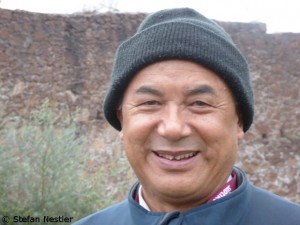

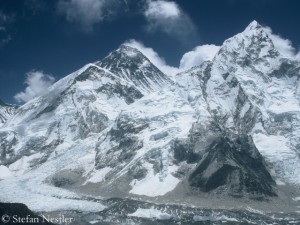
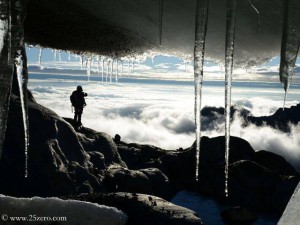
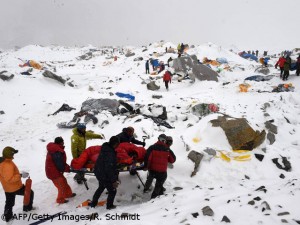
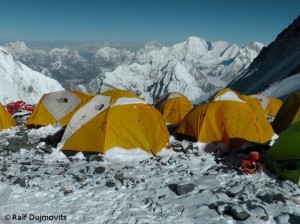
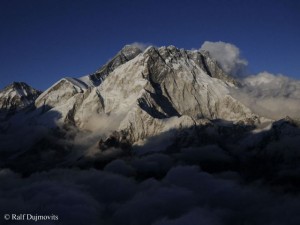
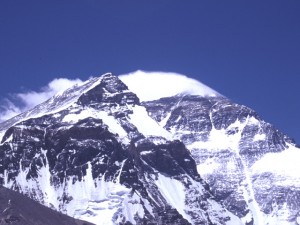
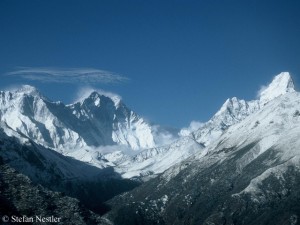
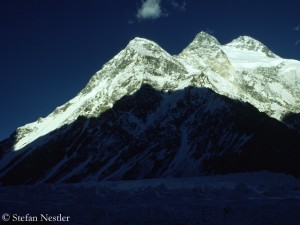


Feedback